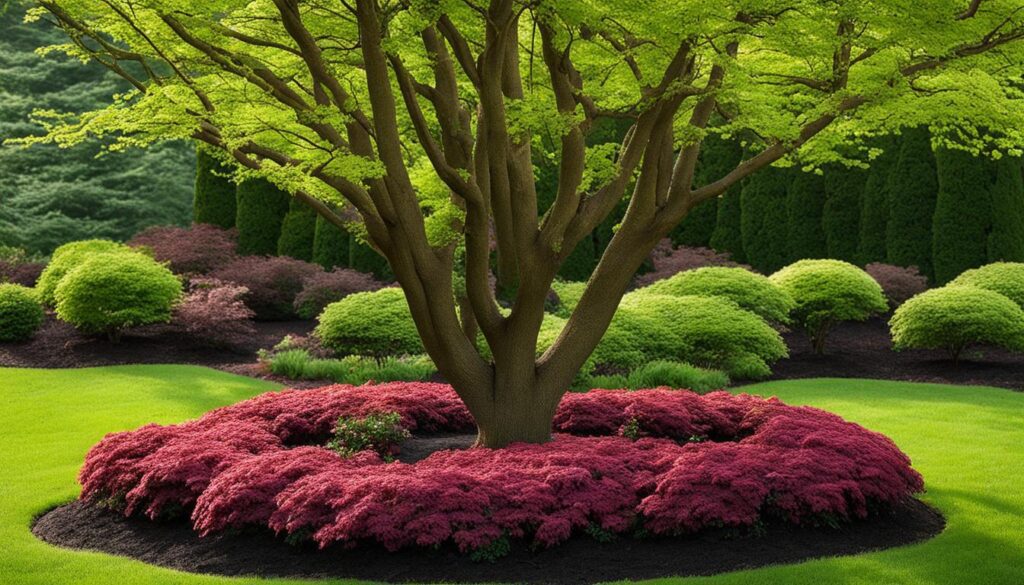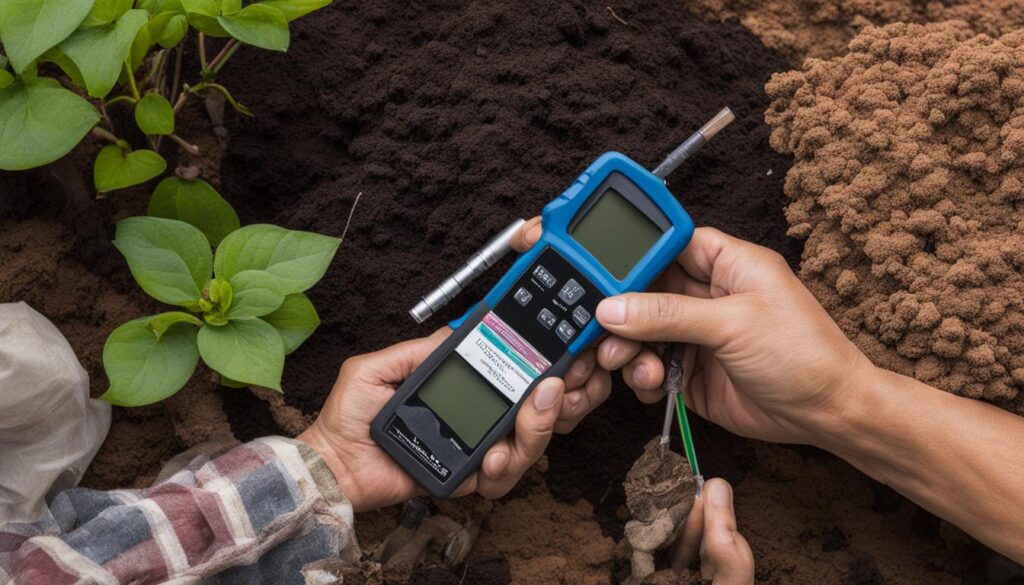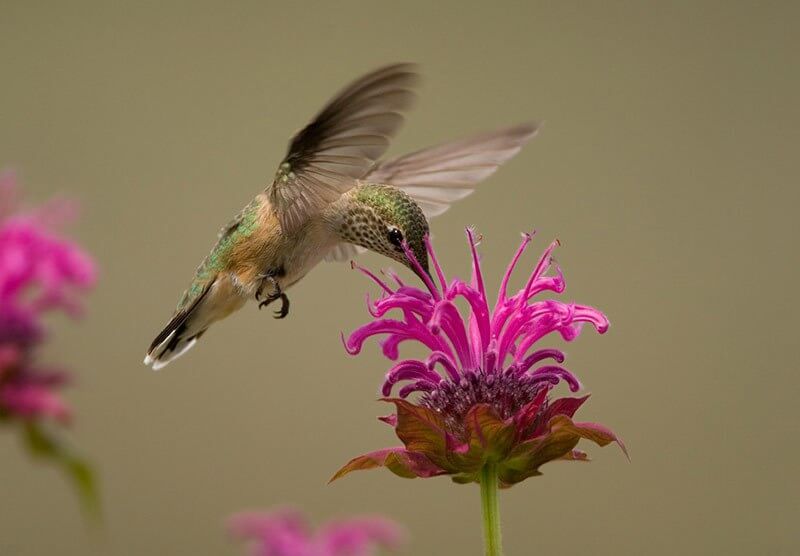Dogwood trees are beautiful and popular landscaping trees in the United States. However, they can sometimes suffer from issues that can cause them to die. In this article, we will explore practical steps you can take to revive a dying dogwood tree and ensure its health and longevity. From mulching to improving soil drainage, pruning, using pesticides, improving soil pH, and considering shade, we will cover everything you need to know to save your dogwood tree.
Key Takeaways
- Reviving a dogwood tree requires addressing issues such as moisture retention, soil drainage, disease control, pest management, soil pH adjustment, and sun exposure.
- Applying mulch around the base of the tree can help preserve moisture and prevent soil dryness.
- Improving soil drainage by mixing soil with appropriate materials or considering transplantation to a suitable location is crucial for the tree’s survival.
- Pruning infected branches and using fungicides can help control diseases like anthracnose that can cause the death of the tree.
- Using pesticides is an effective method of pest control, especially against dogwood borers.
Apply Mulch to Preserve Moisture
Mulching is an effective technique for preserving moisture and preventing soil dryness around your dogwood tree. During hot summer months, the soil can quickly dry out, which can be detrimental to the tree’s health. By applying several inches of mulching material around the base of the tree, you can help regulate soil temperature, reduce evaporation, and maintain the desired moisture levels for healthy growth.
A study conducted by experts in the field found that mulching helps retain up to 75% more moisture in the soil compared to bare soil. This can significantly reduce the need for frequent watering and conserve water, making it an eco-friendly choice for your garden.
When applying mulch, make sure to keep a distance between the mulch and the tree trunk to prevent rot and pest infestation. Regularly check the mulch depth and replenish it as needed. Mulching not only helps preserve moisture but also suppresses weed growth and improves soil structure over time, providing additional benefits to your dogwood tree.
Benefits of Mulching:
- Preserves soil moisture, preventing drying
- Regulates soil temperature
- Reduces evaporation
- Suppresses weed growth
- Improves soil structure over time
By applying mulch to your dogwood tree, you can create an optimal environment for healthy growth and ensure its longevity.
Improve Soil Drainage
Proper soil drainage is essential for the health and survival of a dogwood tree. When the soil drains too quickly, it can lead to excessive dryness, depriving the tree of much-needed moisture. On the other hand, if the soil retains too much water, it can cause waterlogging, suffocating the tree’s roots. To improve soil drainage, you can take several measures.
Drainage Improvement
If your dogwood tree is suffering from poor drainage, one solution is to mix the existing soil with clay or loam soils. These types of soils retain more water, helping to promote better moisture retention and preventing excessive dryness. By blending them into the existing soil, you can create a more balanced and well-draining environment for your dogwood tree.
Water Retention
Water retention is crucial for the overall health and growth of your dogwood tree. If the soil is not retaining enough water, consider adding organic matter, such as compost or peat moss. These materials can help improve the soil’s water-holding capacity, ensuring that the tree receives sufficient moisture.
Transplantation
In some cases, the existing soil conditions may be unsuitable for your dogwood tree, making it difficult to achieve proper drainage. In such situations, transplanting the tree to a location with the right soil pH and improved drainage can be a viable option. Before transplanting, make sure to prepare the new location by amending the soil as needed to ensure optimal growing conditions.
Improving soil drainage is a critical step in reviving a dying dogwood tree. By addressing this issue and providing a suitable environment for the tree to grow, you can significantly increase its chances of survival and restore its health.
Prune to Remove Diseased Branches
Pruning is a crucial step in addressing the anthracnose fungal disease and ensuring the health of your dogwood tree. By promptly removing infected branches, you can effectively manage the spread of the disease and increase the chances of reviving the tree. When pruning, make sure to use clean, sharp pruning shears to prevent further damage to the tree.
“Pruning is an essential practice to control anthracnose in dogwood trees. Remove and destroy all diseased branches to prevent the spread of the fungal spores. It is recommended to prune during late winter or early spring, before the tree enters its active growth phase. Be sure to sanitize your pruning tools between cuts to avoid spreading the disease to healthy parts of the tree.”
In addition to removing the infected branches, it is important to dispose of them properly to prevent the disease from spreading. Burning the pruned branches is an effective method to eliminate any remaining spores. To further protect your dogwood tree, consider applying a suitable fungicide, such as daconil, to the freshly pruned parts, following the manufacturer’s instructions for application. This can help control the spread of the disease and promote the tree’s recovery.
Preventative Measures Against Anthracnose
While pruning is essential for managing the anthracnose fungal disease, there are other preventative measures you can take to protect your dogwood tree. These include:
- Avoiding overhead watering, as it can promote the spread of the disease.
- Ensuring proper air circulation around the tree by pruning surrounding vegetation.
- Applying a layer of mulch around the base of the tree to prevent soil splashing onto the lower branches.
- Promoting overall tree health through regular fertilization and watering.
By combining proper pruning techniques with these preventative measures, you can effectively control the spread of anthracnose and give your dogwood tree the best chance of recovery.
Use Pesticides for Pest Control
When it comes to reviving a dying dogwood tree, one important aspect to consider is pest control. The presence of dogwood borers can cause significant damage to the tree, leading to its deterioration and potential death. To combat this issue, it is necessary to use pesticides to eliminate these harmful pests and protect the tree’s overall health.
Using pesticides specifically designed for dogwood borers can effectively control their population and prevent further damage. Apply the pesticide according to the instructions provided by the manufacturer, ensuring proper coverage of the infected areas. Once the borers have been eradicated, it is crucial to uproot and burn any severely damaged parts of the tree to eliminate the possibility of reinfestation.
Additionally, it is advisable to transplant any remaining healthy plants to different locations to avoid any pests that may be lurking in the soil. This will help eliminate the risk of spreading infestations and protect the health of other plants in your garden. It is recommended to wait at least a year or two before replanting dogwood trees in the same space, allowing time for the pests to die off naturally.
Comparison of Dogwood Borer Pest Control Methods
| Pest Control Method | Effectiveness | Application Frequency | Advantages |
|---|---|---|---|
| Chemical Pesticides | High | As needed |
|
| Biological Control | Moderate | Varies |
|
| Cultural Practices | Low | Ongoing |
|
Remember to always follow the instructions provided by the pesticide manufacturer and take necessary safety precautions when applying pesticides. Consult a professional arborist or horticulturist for advice on the most suitable pesticides for your specific dogwood tree species and the severity of the infestation.
By effectively using pesticides for pest control, you can safeguard your dogwood tree from further damage and ensure its long-term health and vitality.
Improve Soil pH for Healthy Growth
Dogwood trees require specific soil conditions to thrive and reach their full potential. One crucial factor to consider is the soil pH. Dogwood trees prefer slightly acidic to neutral soil with a pH range of 5.5 to 7.0. If your soil is too alkaline, it can lead to yellowing leaves and hinder the tree’s ability to produce food through photosynthesis, ultimately causing its death.
To determine the pH level of your soil, you can use a soil testing kit available at gardening stores or consult with a professional. If the soil pH is too high, there are several methods you can employ to improve it and revive your dogwood tree.
One effective approach is to apply fertilizers and other soil amendments that can help neutralize alkalinity. These products contain substances like sulfur or iron sulfate, which can lower the pH level of the soil over time. Follow the manufacturer’s instructions for application rates and frequency to avoid over-fertilizing or causing nutrient imbalances.
If the soil pH issue persists or if your dogwood tree is severely affected, you may consider transplanting it to a location with the recommended pH range. This will provide the tree with a fresh start in more suitable soil conditions, increasing its chances of survival and healthy growth.
Soil pH Improvement Methods
| Method | Description |
|---|---|
| Applying Soil Amendments | Use fertilizers and soil amendments that lower soil pH, such as sulfur or iron sulfate, following the recommended application rates. |
| Adding Organic Matter | Amend the soil with organic matter like compost or peat moss to help lower alkalinity and improve soil structure. |
| Watering with Acidic Solutions | Occasionally water the tree with a diluted solution of vinegar or citric acid to help lower soil pH. |
| Combining Acidic Materials | Mixing acidic materials like elemental sulfur or aluminum sulfate into the soil can gradually lower the pH. |
Remember, it’s important to regularly monitor the soil pH levels and make adjustments as needed. Reviving a dogwood tree requires patience and consistent care, but by improving the soil pH, you can provide the optimal environment for your tree to thrive.
Consider Moving the Tree Under Shade
If you notice that your dogwood tree is exposed to excessive sunlight, especially during the hot summer months, it is crucial to consider moving the tree to a location with partial shade. Providing shade can help protect the tree from sunburn and reduce evaporation, allowing for better moisture retention. This is particularly important as dogwood trees prefer cooler weather and can be sensitive to intense sunlight.
By moving the tree to a shaded area, you create a more favorable environment for its growth and overall health. Not only does shade help prevent sunburn, but it also helps reduce water loss through evaporation, ensuring that the tree has sufficient moisture to thrive. This is especially beneficial during periods of drought or when the soil conditions are not ideal for water retention.
Remember to choose a location with partial shade rather than full shade, as dogwood trees still require some sunlight for photosynthesis. It’s essential to strike the right balance between shade and sunlight to create an optimal growing environment for your dogwood tree.
Benefits of Moving Your Dogwood Tree Under Shade
- Protection from sunburn
- Reduced evaporation and better moisture retention
- Optimal growing environment with the right balance of shade and sunlight
When considering the location for moving your dogwood tree, look for areas with existing shade provided by larger trees or buildings. Alternatively, you can create shade artificially using shade cloths or umbrellas. Ensure that the shade is provided during the hottest parts of the day, usually in the afternoon when the sun is at its peak.
“Providing shade for your dogwood tree can be a simple yet effective solution to protect it from excessive sun exposure and help it thrive in a more favorable microclimate.”
By considering the shade needs of your dogwood tree and taking the necessary steps to move it to a suitable location, you can ensure that it has the best chance of healthy growth and longevity.
Common Causes of Dogwood Tree Death
Dogwood trees are susceptible to various issues that can lead to their demise. Understanding the common causes of dogwood tree death is essential in identifying and addressing the underlying problems. Here are some of the primary factors that can contribute to the death of dogwood trees:
Diseases
Dogwood trees are prone to diseases, with dogwood anthracnose being one of the most significant threats. This fungal disease can cause leaf spots, stem cankers, and dieback, ultimately leading to the death of the tree. Early detection and proper treatment are essential to prevent the spread of the disease and save the tree.
Pests
Pests such as dogwood borers can cause extensive damage to dogwood trees. These insects bore into the stems and branches, weakening the tree’s structure and compromising its health. If left untreated, pest infestations can result in the death of the tree. Implementing effective pest control measures is crucial to protect your dogwood tree.
Soil Drainage Issues
Poor soil drainage can negatively impact the health of dogwood trees. Waterlogged soil can suffocate the roots and prevent the tree from accessing essential nutrients. Excessive dryness, on the other hand, can lead to dehydration and stress. Correcting soil drainage issues is vital to ensure proper root health and prevent tree death.
By being aware of these common causes of dogwood tree death, you can take proactive measures to protect your tree and help it thrive. Regular monitoring, early detection of diseases and pests, proper soil management, and appropriate care can significantly increase the longevity of your dogwood tree.
| Common Causes of Dogwood Tree Death | Symptoms | Treatment |
|---|---|---|
| Diseases (e.g., dogwood anthracnose) | Leaf spots, stem cankers, dieback | Early detection, proper treatment, fungicide application |
| Pests (e.g., dogwood borers) | Stem and branch damage, weakened structure | Pest control measures, tree removal if infestation is severe |
| Soil Drainage Issues (e.g., waterlogging, excessive dryness) | Root suffocation, dehydration, stress | Improve soil drainage, watering management |
“Proper diagnosis and timely intervention are crucial in preventing dogwood tree death. Regular observation and prompt action can save your tree and preserve its beauty in your landscape.” – Experienced Arborist
Conclusion
Reviving a dying dogwood tree requires a comprehensive approach that addresses various factors affecting its health and survival. By following the tips outlined in this article, you can increase the chances of saving and reviving your beloved dogwood tree.
To begin, apply mulch around the base of the tree to preserve moisture and prevent soil dryness. This will help maintain the desired moisture levels for healthy growth. Additionally, improving soil drainage by mixing in appropriate soil types or considering transplantation to a suitable location can greatly improve the tree’s chances of survival.
Proper pruning techniques, such as removing diseased branches and using fungicides, can effectively manage diseases like anthracnose. Similarly, using pesticides to control pests like dogwood borers can prevent significant damage to the tree. Paying attention to soil pH and making necessary adjustments through fertilizers or transplanting can also contribute to the tree’s revival.
Lastly, consider moving the tree to a location with partial shade to protect it from excessive sunlight and reduce evaporation. By implementing these tips and regularly caring for your dogwood tree, you can ensure its health and longevity, allowing it to continue beautifying your landscape for years to come.
Will Planting a Dogwood Tree Too Close to the House Affect Its Revival?
When considering planting a dogwood tree, it’s vital to assess the planting dogwood tree distance from house. If the tree is planted too close, it can affect its revival and potentially cause damage to the house’s foundation. It’s important to plant the tree at a safe distance to ensure both the tree’s health and the house’s stability.
FAQ
How can I revive a dying dogwood tree?
To revive a dying dogwood tree, you can take several practical steps. These include applying mulch to preserve moisture, improving soil drainage, pruning to remove diseased branches, using pesticides for pest control, improving soil pH, considering shade, and addressing common causes of dogwood tree death.
How does mulching help in preserving moisture for a dogwood tree?
Mulching is effective in preventing soil dryness and preserving moisture around the base of a dogwood tree. By applying mulching material around the tree’s base, you can help cool the soil and maintain the desired moisture levels for healthy growth. Avoid contact with the trunk and regularly check for wilting, adjusting water as needed.
Why is proper soil drainage important for a dogwood tree’s survival?
Proper soil drainage is crucial for the survival of a dogwood tree. If the soil drains too quickly, it can cause excessive dryness and potential death. Mixing the existing soil with clay or loam soils can promote water retention. If the soil retains too much water, mixing it with sandy soil can improve drainage. If conditions are unsuitable, transplantation may be necessary.
How can pruning help manage anthracnose fungal disease in dogwood trees?
Pruning is an effective way to manage anthracnose fungal disease in dogwood trees. By removing infected branches and disposing of them properly, you can control the spread of the disease. It is recommended to spray the pruned parts with a suitable fungicide, such as daconil. If other plants are nearby, consider transplanting them to healthier locations.
What can I do to control dogwood borers and protect my dogwood tree?
Dogwood borers can cause significant damage to dogwood trees by creating holes in the stems and branches. Using pesticides for pest control is an effective method. If the tree is beyond saving, uproot and burn it to prevent the pests from spreading. Transplant remaining healthy plants to different locations, avoiding replanting dogwood trees in the same space for a year or two.
How does soil pH affect the health of a dogwood tree?
Dogwood trees thrive in slightly acidic to neutral soil with a pH range of 5.5 to 7.0. If the soil is too alkaline, it can hinder the tree’s ability to produce food through photosynthesis, ultimately causing its death. Testing soil pH is essential for accurate diagnosis. Applying fertilizers and soil amendments can help improve pH levels, or transplantation may be considered.
Why is considering shade important for a dogwood tree’s well-being?
Dogwood trees prefer cool or cold weather and can be sensitive to excessive sunlight, especially during hot summer months. Moving the tree to a location with partial shade can protect it from sunburn and reduce evaporation, promoting necessary moisture retention for healthy growth.
What are the common causes of dogwood tree death?
Dogwood trees can experience various issues leading to their death. Diseases, like dogwood anthracnose, and pests, such as dogwood borers, can severely impact the tree’s health. Poor soil drainage, including waterlogging or excessive dryness, can further compromise the tree’s survival.
How can I summarize the steps to revive a dogwood tree?
Reviving a dying dogwood tree requires a multi-faceted approach. Applying mulch, improving soil drainage, pruning, using pesticides, adjusting soil pH, considering shade, and addressing common causes of dogwood tree death are all important steps to save and revive the tree. Regular inspection and care are necessary for maintaining its health and ensuring its longevity.













